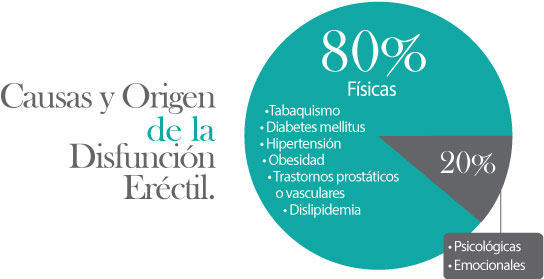Book Appointment Now
The cutting edge technologies to treat erectile dysfunction
Advances In Shockwave Therapy For Erectile Dysfunction
Erectile dysfunction (ED) remains a prevalent condition affecting millions of men worldwide, with significant implications for quality of life and psychological well-being. While traditional treatments such as oral medications, vacuum devices, and surgical interventions have long been the cornerstone of ED management, recent advancements in medical technology have introduced innovative approaches to address this condition. Among these, shockwave therapy has emerged as a cutting-edge treatment modality, offering promising results for patients seeking non-invasive and effective solutions. Shockwave therapy, originally developed for treating kidney stones and musculoskeletal conditions, has been adapted for use in urology, particularly for ED. This therapy utilizes low-intensity extracorporeal shockwaves to stimulate tissue regeneration and improve blood flow, addressing the underlying vascular issues often associated with erectile dysfunction. The procedure involves the application of targeted acoustic waves to the penile tissue, which promotes the formation of new blood vessels (angiogenesis) and enhances the repair of damaged vascular structures. This process not only improves erectile function but also contributes to the overall health of the penile tissue.
One of the key advantages of shockwave therapy is its non-invasive nature. Unlike surgical interventions, which carry inherent risks and require significant recovery time, shockwave therapy is performed on an outpatient basis and involves minimal discomfort. Patients typically undergo a series of sessions, each lasting about 15 to 20 minutes, over a period of several weeks. The procedure is well-tolerated, with most men reporting only mild sensations during treatment. Furthermore, shockwave therapy does not rely on pharmaceuticals, making it an attractive option for individuals who may not respond to or tolerate oral medications such as phosphodiesterase-5 inhibitors (PDE5i).
Clinical studies have demonstrated the efficacy of shockwave therapy in improving erectile function, particularly in men with mild to moderate ED. Research indicates that the therapy can enhance penile rigidity, increase the frequency of spontaneous erections, and improve overall sexual satisfaction. Importantly, the benefits of shockwave therapy appear to be sustained over time, with many patients experiencing long-term improvements in erectile function. This durability sets it apart from temporary solutions like oral medications, which require ongoing use to maintain their effects.
Despite its promising outcomes, shockwave therapy is not without limitations. It is most effective in men with vascular-related ED and may be less beneficial for those with severe or non-vascular causes of the condition. Additionally, the therapy is still relatively new, and long-term data on its safety and efficacy are limited. As with any medical treatment, it is essential for patients to consult with a qualified healthcare provider to determine whether shockwave therapy is an appropriate option for their specific needs.
In conclusion, shockwave therapy represents a significant advancement in the treatment of erectile dysfunction, offering a non-invasive, drug-free alternative with the potential for long-lasting benefits. As research continues to evolve and technology advances, this therapy is likely to play an increasingly important role in the management of ED, providing hope and improved outcomes for men worldwide. By addressing the root causes of erectile dysfunction and promoting tissue regeneration, shockwave therapy exemplifies the innovative approaches that are reshaping the field of urology and enhancing patient care.
Breakthroughs In Stem Cell Treatment For ED Recovery
In recent years, the field of regenerative medicine has made significant strides in addressing erectile dysfunction (ED), a condition that affects millions of men worldwide. Among the most promising advancements is the use of stem cell therapy, which offers a novel approach to restoring erectile function by targeting the root causes of the condition. Unlike traditional treatments that primarily manage symptoms, stem cell therapy aims to repair damaged tissues and promote long-term recovery, marking a paradigm shift in ED treatment. Stem cells, known for their unique ability to differentiate into various cell types, hold immense potential in regenerating blood vessels, nerves, and smooth muscle tissues that are critical for healthy erectile function. This groundbreaking approach leverages the body’s natural healing mechanisms, offering hope to patients who have not responded to conventional therapies such as oral medications, injections, or surgical interventions.
One of the key advantages of stem cell therapy lies in its ability to address the underlying vascular and neurological issues that often contribute to ED. For instance, conditions like diabetes, hypertension, and atherosclerosis can impair blood flow to the penile region, leading to erectile difficulties. Stem cells, when administered, can stimulate angiogenesis—the formation of new blood vessels—thereby improving circulation and enhancing erectile capacity. Additionally, these cells can promote nerve regeneration, which is particularly beneficial for men who have experienced nerve damage due to prostate surgery or other traumatic events. By targeting both vascular and neural components, stem cell therapy offers a comprehensive solution that goes beyond symptomatic relief.
The process of stem cell treatment typically involves harvesting stem cells from the patient’s own body, often from sources such as bone marrow or adipose tissue. These cells are then processed and concentrated before being injected into the penile region or administered intravenously. The use of autologous stem cells minimizes the risk of immune rejection and ensures compatibility, making the procedure safer and more effective. Clinical trials have demonstrated encouraging results, with many patients reporting significant improvements in erectile function, sexual satisfaction, and overall quality of life. While research is still ongoing, these findings underscore the potential of stem cell therapy as a viable treatment option for ED.
Despite its promise, stem cell therapy is not without challenges. The field is still in its early stages, and more extensive studies are needed to establish standardized protocols, optimize dosages, and evaluate long-term outcomes. Additionally, the cost of treatment can be prohibitive for some patients, limiting accessibility. However, as research progresses and technology advances, it is likely that these barriers will be addressed, paving the way for broader adoption of this innovative therapy.
In conclusion, stem cell therapy represents a cutting-edge approach to treating erectile dysfunction, offering the potential for tissue regeneration and functional recovery. By addressing the root causes of ED rather than merely alleviating symptoms, this treatment holds the promise of transforming the lives of countless men. As scientists continue to explore its mechanisms and refine its applications, stem cell therapy may well become a cornerstone of ED management, ushering in a new era of hope and healing for patients worldwide.
Innovations In Penile Implant Technology And Robotics
The field of erectile dysfunction (ED) treatment has witnessed remarkable advancements in recent years, particularly in the realm of penile implant technology and robotics. These innovations are revolutionizing the way ED is managed, offering patients more effective, durable, and minimally invasive solutions. Traditional treatments, such as oral medications and vacuum erection devices, have long been the cornerstone of ED management. However, for patients who do not respond to these therapies or seek more permanent solutions, penile implants have emerged as a cutting-edge alternative. Modern penile implants are designed with precision engineering, incorporating advanced materials and mechanisms that enhance functionality, durability, and patient satisfaction.
One of the most significant breakthroughs in penile implant technology is the development of inflatable implants with improved hydraulic systems. These devices, which consist of cylinders implanted in the penis, a pump placed in the scrotum, and a reservoir in the abdomen, allow for on-demand erections that closely mimic natural physiology. Recent innovations have focused on reducing mechanical failure rates, a common concern with earlier models. For instance, the use of antimicrobial coatings and reinforced materials has significantly decreased the risk of infection and device malfunction. Additionally, the introduction of touch-activated pumps and wireless remote controls has made these implants more user-friendly, empowering patients to operate them with greater ease and discretion.
Robotics has also begun to play a pivotal role in the surgical placement of penile implants, enhancing precision and reducing recovery times. Robotic-assisted surgery, which utilizes advanced imaging and robotic arms controlled by surgeons, allows for minimally invasive procedures with unparalleled accuracy. This approach minimizes tissue damage, reduces postoperative pain, and accelerates healing, making it an attractive option for patients and surgeons alike. Furthermore, robotics enables surgeons to navigate complex anatomical structures with greater confidence, ensuring optimal placement of the implant components. As a result, patients experience improved outcomes, including enhanced erectile function and reduced complications.
Another promising innovation is the integration of smart technology into penile implants. Researchers are exploring the potential of implantable devices equipped with sensors and wireless connectivity, which could monitor physiological parameters and provide real-time feedback to both patients and healthcare providers. For example, such devices could track blood flow, pressure, and device performance, alerting users to potential issues before they escalate. This proactive approach not only enhances patient safety but also allows for personalized adjustments to optimize functionality. While still in the experimental stage, these smart implants represent a significant leap forward in the evolution of ED treatment.
The convergence of robotics, advanced materials, and smart technology is reshaping the landscape of penile implant technology, offering patients unprecedented levels of control, comfort, and efficacy. These innovations are particularly beneficial for individuals with severe ED or those who have not responded to conventional therapies. By addressing the limitations of earlier devices and surgical techniques, these cutting-edge solutions are setting new standards for ED treatment. As research and development continue to push the boundaries of what is possible, the future of penile implant technology promises even greater advancements, ultimately improving the quality of life for countless individuals affected by erectile dysfunction.



